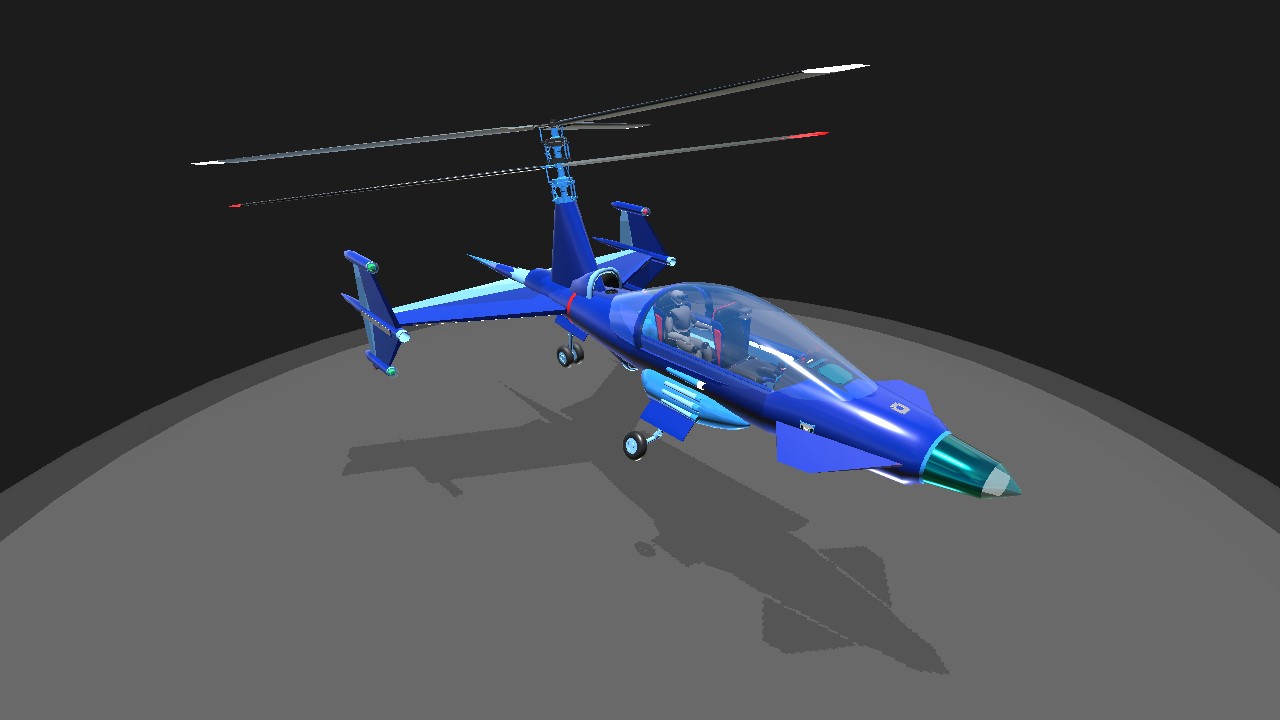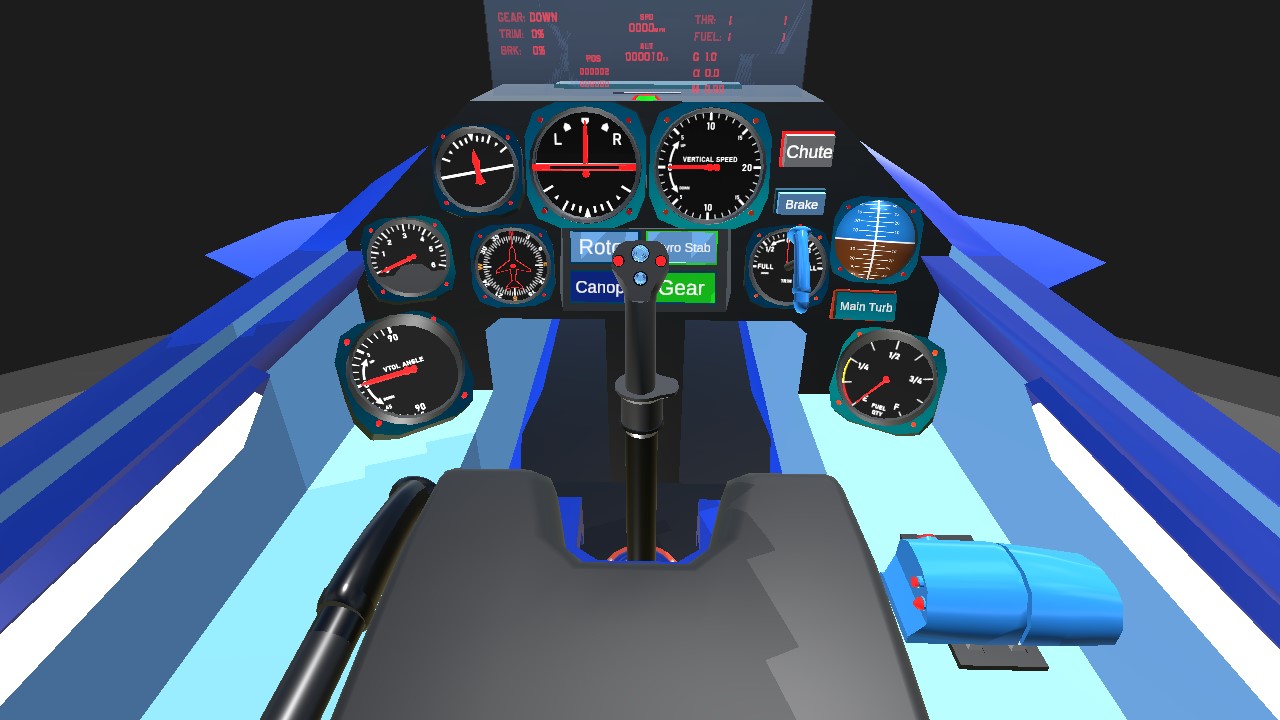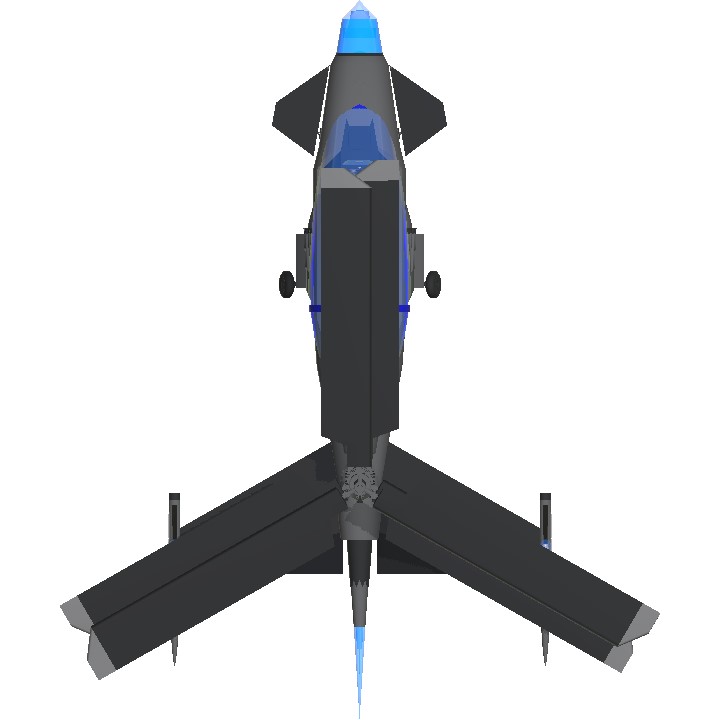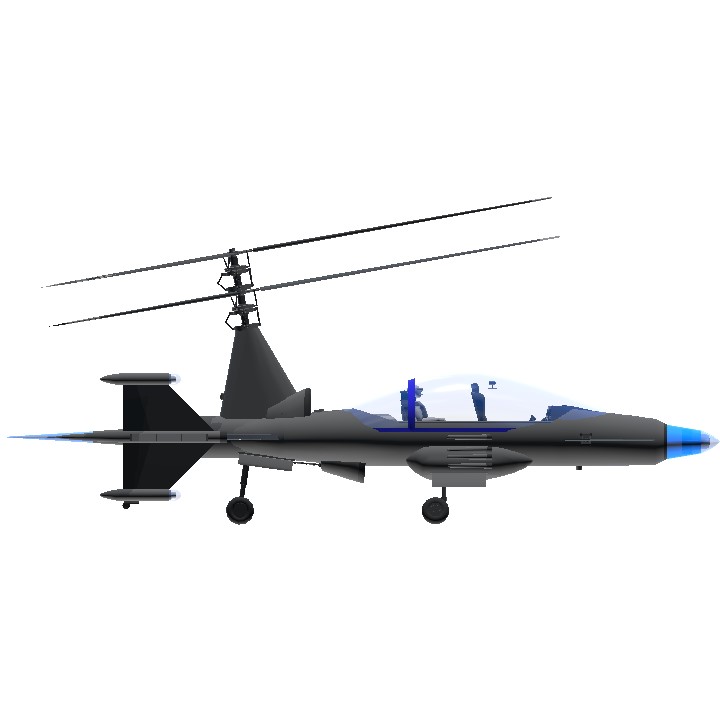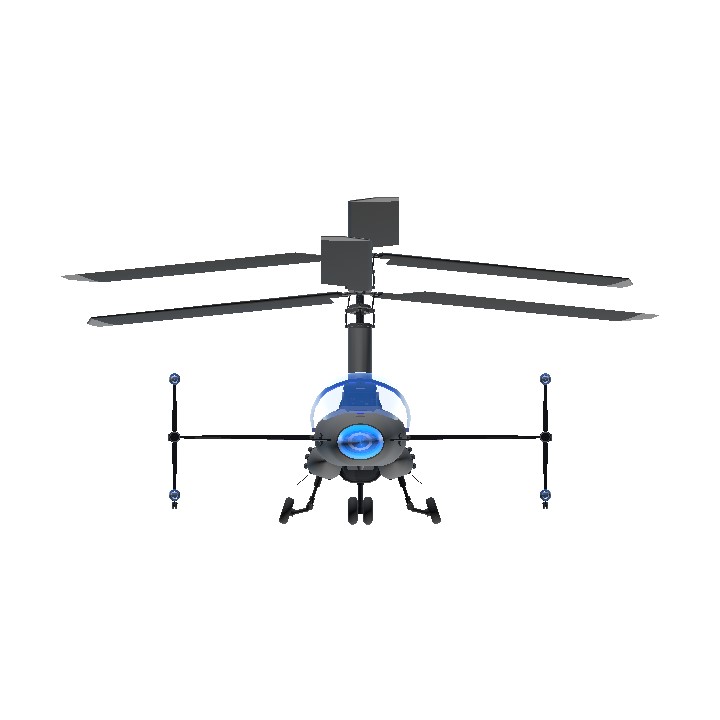Hopefully all of these controls show up in VR, though Rotor [Shaft] tilt may yet require a more exaggerated motion.
A little temperamental, but surprisingly stable in autorotation if you watch your airspeed and cyclicInstructions for this Platform will remain the same unless a major design change occurs. The Convair AutoDrake is an AutoGyro, but with more flexibility and range than a standard single rotor propeller-driven rotorcraft. By utilizing a jet turbine, thrust may be applied in the traditional manner, but shaft power may also be directed to the coaxial rotors, to stabilize them at higher airspeeds, as well as to an onboard reaction wheel. This final item is critical to escaping flat spins, if one is induced through erratic input or incorrect tailwind correction, by way of forced yaw input at negligible forward airspeed. When taking off, the first step is to disengage the Reaction Wheel [Gyro]. The Gyro is spooled during preflight via the APU, and is thus active and engaged by default.When taking off from your local airstrip, the Rotor [Shaft] Angle should be set as far back as possible, and parking brakes disengaged [for equipped models]. The [Main Turbine] should be set to a minimum of 25% throttle, and the central gear will be used to apply Yaw through taxi. Operator will observe Rotor RPM, maintaining zero collective pitch until such time as Rotor RPM climbs through 400 RPM, and may rotate at neutral collective provided an Indicated Airspeed of 85 mph or greater, not to exceed 110 mph at takeoff, to minimize chances of rearward pitchover. When onboard sea vessels, or in a headwind, an Indicated Airspeed of 15-20 mph is sufficient to begin autorotation for hover purposes. The Rotor [Shaft] Angle should be set as far back as possible, and parking brakes engaged [for equipped models, otherwise allow bypass thrust at ~1%, remaining aware of vicinity, engaging toe brake if able]. Operator will observe Rotor RPM, maintaining zero or slightly negative collective pitch until such time as Rotor RPM climbs through 325-350 R
Specifications
Spotlights
- This craft is curated
- blt 9 months ago
General Characteristics
- Created On Android
- Wingspan 21.3ft (6.5m)
- Length 25.5ft (7.8m)
- Height 11.7ft (3.6m)
- Empty Weight 5,042lbs (2,287kg)
- Loaded Weight 5,626lbs (2,552kg)
Performance
- Power/Weight Ratio 5.791
- Wing Loading 92.9lbs/ft2 (453.7kg/m2)
- Wing Area 60.5ft2 (5.6m2)
- Drag Points 2598
Parts
- Number of Parts 172
- Control Surfaces 6
- Performance Cost 1,450

